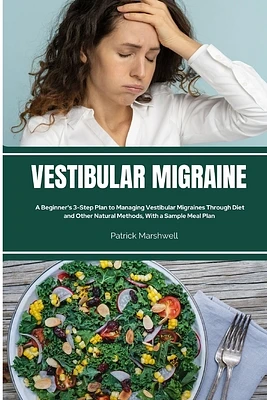Home
Autoimmune Atrophic Gastritis: A Beginner's 3-Step Quick Start Guide to Managing the Condition Through Diet, with Sample Curated Recipes
Loading Inventory...
Barnes and Noble
Autoimmune Atrophic Gastritis: A Beginner's 3-Step Quick Start Guide to Managing the Condition Through Diet, with Sample Curated Recipes
Current price: $13.24


Barnes and Noble
Autoimmune Atrophic Gastritis: A Beginner's 3-Step Quick Start Guide to Managing the Condition Through Diet, with Sample Curated Recipes
Current price: $13.24
Loading Inventory...
Size: Paperback
*Product Information may vary - to confirm product availability, pricing, and additional information please contact Barnes and Noble
Autoimmune atrophic gastritis is a condition in which the body's immune system attacks and destroys the cells lining the stomach.
This can lead to a loss of stomach acid and other digestive juices, which can make it difficult to absorb nutrients from food.
Atrophic gastritis involves a scenario where the lining of an individual's stomach undergoes inflammation. This condition tends to develop gradually, spanning several years in many cases.
When the stomach lining is inflamed, it can become thinner and less able to produce stomach acids. This can lead to several health problems, including nutrient deficiencies, ulcers, and an increased risk of stomach cancer.
Atrophic gastritis is most common in older adults, but it can occur at any age. Treatment typically focuses on managing the symptoms and preventing complications. In some cases, surgery may be necessary to remove a portion of the stomach lining that has been damaged by inflammation.
While there is no cure for autoimmune atrophic gastritis, there are treatments that can help manage the condition and improve symptoms. One of the most important things you can do to manage this condition is to eat a healthy diet.
In this quick start guide, we will discuss in detail:
What causes Autoimmune Atrophic Gastritis?
What are its symptoms?
When to see a doctor?
How is it diagnosed?
What are the treatments for autoimmune atrophic gastritis?
Complications of autoimmune atrophic gastritis.
Risk factors for autoimmune atrophic gastritis.
Living with autoimmune atrophic gastritis.
How to manage autoimmune atrophic gastritis through diet and nutrition?
Keep reading as we take a closer look at autoimmune atrophic gastritis, offering insights and guidance on understanding its causes, recognizing symptoms, determining when to seek medical advice, navigating through diagnostic processes, evaluating treatment options, identifying potential complications and risk factors, and adopting effective dietary management strategies.
This guide is designed to empower you with the knowledge needed to manage this condition more effectively, aiming for a proactive approach to health management and an enhanced quality of life.
This can lead to a loss of stomach acid and other digestive juices, which can make it difficult to absorb nutrients from food.
Atrophic gastritis involves a scenario where the lining of an individual's stomach undergoes inflammation. This condition tends to develop gradually, spanning several years in many cases.
When the stomach lining is inflamed, it can become thinner and less able to produce stomach acids. This can lead to several health problems, including nutrient deficiencies, ulcers, and an increased risk of stomach cancer.
Atrophic gastritis is most common in older adults, but it can occur at any age. Treatment typically focuses on managing the symptoms and preventing complications. In some cases, surgery may be necessary to remove a portion of the stomach lining that has been damaged by inflammation.
While there is no cure for autoimmune atrophic gastritis, there are treatments that can help manage the condition and improve symptoms. One of the most important things you can do to manage this condition is to eat a healthy diet.
In this quick start guide, we will discuss in detail:
What causes Autoimmune Atrophic Gastritis?
What are its symptoms?
When to see a doctor?
How is it diagnosed?
What are the treatments for autoimmune atrophic gastritis?
Complications of autoimmune atrophic gastritis.
Risk factors for autoimmune atrophic gastritis.
Living with autoimmune atrophic gastritis.
How to manage autoimmune atrophic gastritis through diet and nutrition?
Keep reading as we take a closer look at autoimmune atrophic gastritis, offering insights and guidance on understanding its causes, recognizing symptoms, determining when to seek medical advice, navigating through diagnostic processes, evaluating treatment options, identifying potential complications and risk factors, and adopting effective dietary management strategies.
This guide is designed to empower you with the knowledge needed to manage this condition more effectively, aiming for a proactive approach to health management and an enhanced quality of life.


















